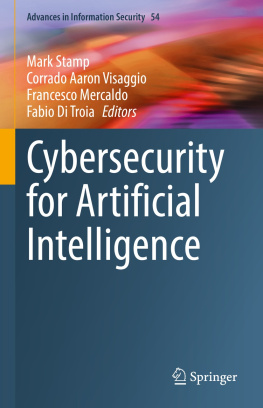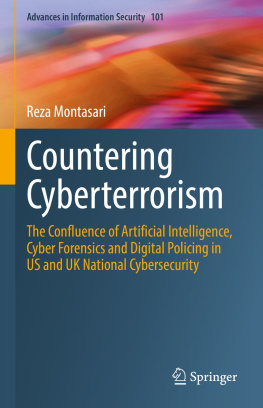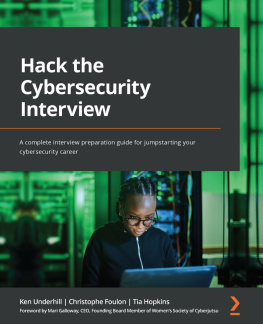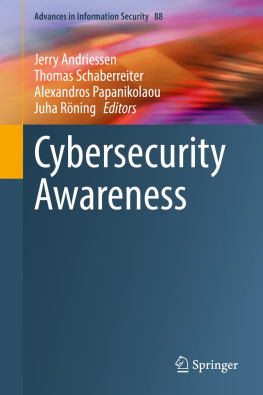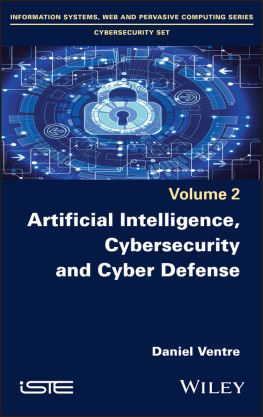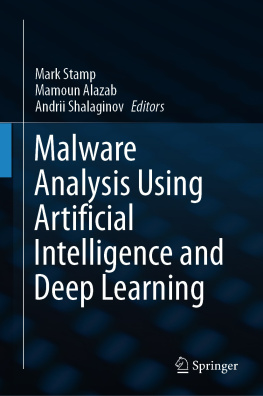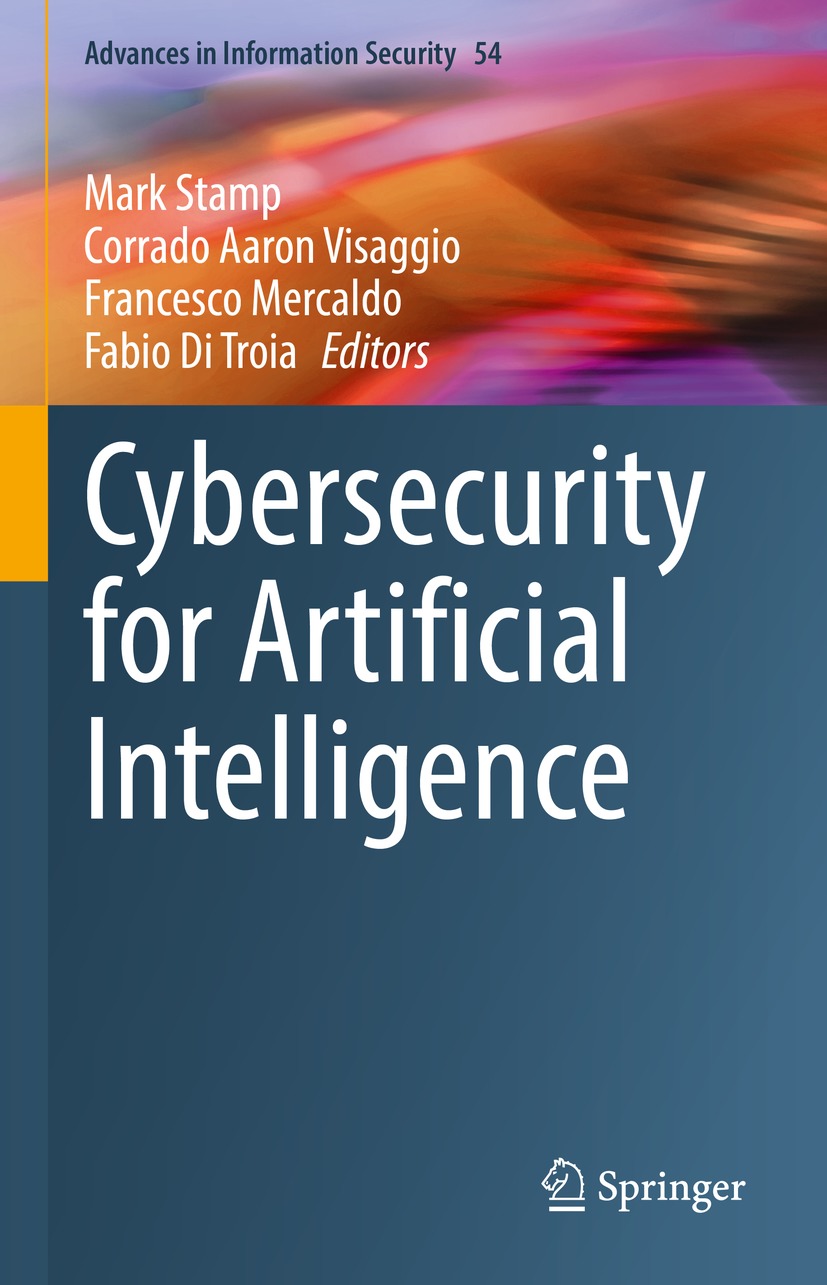Volume 54
Advances in Information Security
Series Editor
Sushil Jajodia
George Mason University, Fairfax, VA, USA
The purpose of the Advances in Information Security book series is to establish the state of the art and set the course for future research in information security. The scope of this series includes not only all aspects of computer, network security, and cryptography, but related areas, such as fault tolerance and software assurance. The series serves as a central source of reference for information security research and developments. The series aims to publish thorough and cohesive overviews on specific topics in Information Security, as well as works that are larger in scope than survey articles and that will contain more detailed background information. The series also provides a single point of coverage of advanced and timely topics and a forum for topics that may not have reached a level of maturity to warrant a comprehensive textbook.
Editors
Mark Stamp , Corrado Aaron Visaggio , Francesco Mercaldo and Fabio Di Troia
Cybersecurity for Artificial Intelligence

Logo of the publisher
Editors
Mark Stamp
San Jose, CA, USA
Corrado Aaron Visaggio
Benevento, Italy
Francesco Mercaldo
Campobasso, Italy
Fabio Di Troia
San Jose, CA, USA
ISSN 1568-2633 e-ISSN 2512-2193
Advances in Information Security
ISBN 978-3-030-97086-4 e-ISBN 978-3-030-97087-1
https://doi.org/10.1007/978-3-030-97087-1
The Editor(s) (if applicable) and The Author(s), under exclusive license to Springer Nature Switzerland AG 2022
This work is subject to copyright. All rights are solely and exclusively licensed by the Publisher, whether the whole or part of the material is concerned, specifically the rights of translation, reprinting, reuse of illustrations, recitation, broadcasting, reproduction on microfilms or in any other physical way, and transmission or information storage and retrieval, electronic adaptation, computer software, or by similar or dissimilar methodology now known or hereafter developed.
The use of general descriptive names, registered names, trademarks, service marks, etc. in this publication does not imply, even in the absence of a specific statement, that such names are exempt from the relevant protective laws and regulations and therefore free for general use.
The publisher, the authors and the editors are safe to assume that the advice and information in this book are believed to be true and accurate at the date of publication. Neither the publisher nor the authors or the editors give a warranty, expressed or implied, with respect to the material contained herein or for any errors or omissions that may have been made. The publisher remains neutral with regard to jurisdictional claims in published maps and institutional affiliations.
This Springer imprint is published by the registered company Springer Nature Switzerland AG
The registered company address is: Gewerbestrasse 11, 6330 Cham, Switzerland
Preface
We are on the cusp of a revolution in artificial intelligence (AI). Today, AI plays a significant role in daily life, and the impact of AI is sure to increase dramatically over the coming years. Perhaps surprisingly, the net effect of this AI revolution on cybersecurity is, at present, unclear, as both the good guys and the bad guys can employ such technology. If cybersecurity is to reap major benefits from AI, the technology itself must be better understoodblack boxes are inherently the enemy of security.
Models used in AI are notoriously opaque, which creates numerous potential problems. From a cybersecurity perspective, one of the greatest of these problems is the threat of adversarial attacks. It follows that explainable AI, for example, is of fundamental importance in information security.
This book includes chapters that attempt to illuminate various aspects of the AI black boxes that have come to dominate cybersecurity. The topics of explainable AI and adversarial attacksas well as the closely related issue of model robustnessare considered. Most of the chapters explore these and similar topics in the context of specific security threats. The security domains considered include such diverse areas as malware, biometrics, and side-channel attacks, among others. We have strived to make the material accessible to the widest possible audience of researchers and practitioners.
We are confident that this book will prove valuable to practitioners working in the field and to researchers in both academia and industry. The chapters include insights that should help to illuminate some of the darkest corners of popular AI models that are used in cybersecurity.
Mark Stamp
Corrado Aaron Visaggio
Francesco Mercaldo
Fabio Di Troia
San Jose, CA, USA Benevento, Italy Campobasso, Italy San Jose, CA, USA
December 2021
Contents
Part I Malware-Related Topics
Matou Kozk , Martin Jureek and Rbert Lrencz
Rakesh Nagaraju and Mark Stamp
Giacomo Iadarola , Fabio Martinelli , Antonella Santone and Francesco Mercaldo
Ji An Lee and Fabio Di Troia
Jan Dolej and Martin Jureek
George Martin , Dona Spencer , Aditya Hair , Deepa K , Sonia Laudanna , Vinod P and Corrado Aaron Visaggio
Joel Alvares and Fabio Di Troia
Lolitha Sresta Tupadha and Mark Stamp
Part II Other Security Topics
Guilherme Perin , Lichao Wu and Stjepan Picek
Elliu Huang , Fabio Di Troia and Mark Stamp
Ruchira Gothankar , Fabio Di Troia and Mark Stamp
Nikolaos Doukas , Peter Stavroulakis , Vyacheslav Kharchenko , Nikolaos Bardis , Dimitrios Irakleous , Oleg Ivanchenko and Olga Morozova
Han-Chih Chang , Jianwei Li , Ching-Seh Wu and Mark Stamp
Han-Chih Chang , Jianwei Li and Mark Stamp
Jianwei Li , Han-Chih Chang and Mark Stamp
About the Author
Mark Stamp
has extensive experience in information security and machine learning, having worked in these fields within academic, industrial, and government environments. After completing his PhD research in cryptography at Texas Tech University, he spent more than 7 years as a cryptanalyst with the United States National Security Agency (NSA), followed by 2 years developing a security product for a Silicon Valley start-up company. Since early in the present century, Dr. Stamp has been employed as a professor in the Department of Computer Science at San Jose State University, where he teaches courses in machine learning and information security. To date, he has published more than 150 research articles, most of which deal with problems at the interface between machine learning and information security. Dr. Stamp served as a co-editor of the Handbook of Information and Communication Security (Springer, 2010) and Malware Analysis Using Artificial Intelligence and Deep Learning (Springer 2020), and he is the author of multiple textbooks, including Information Security: Principles and Practice

